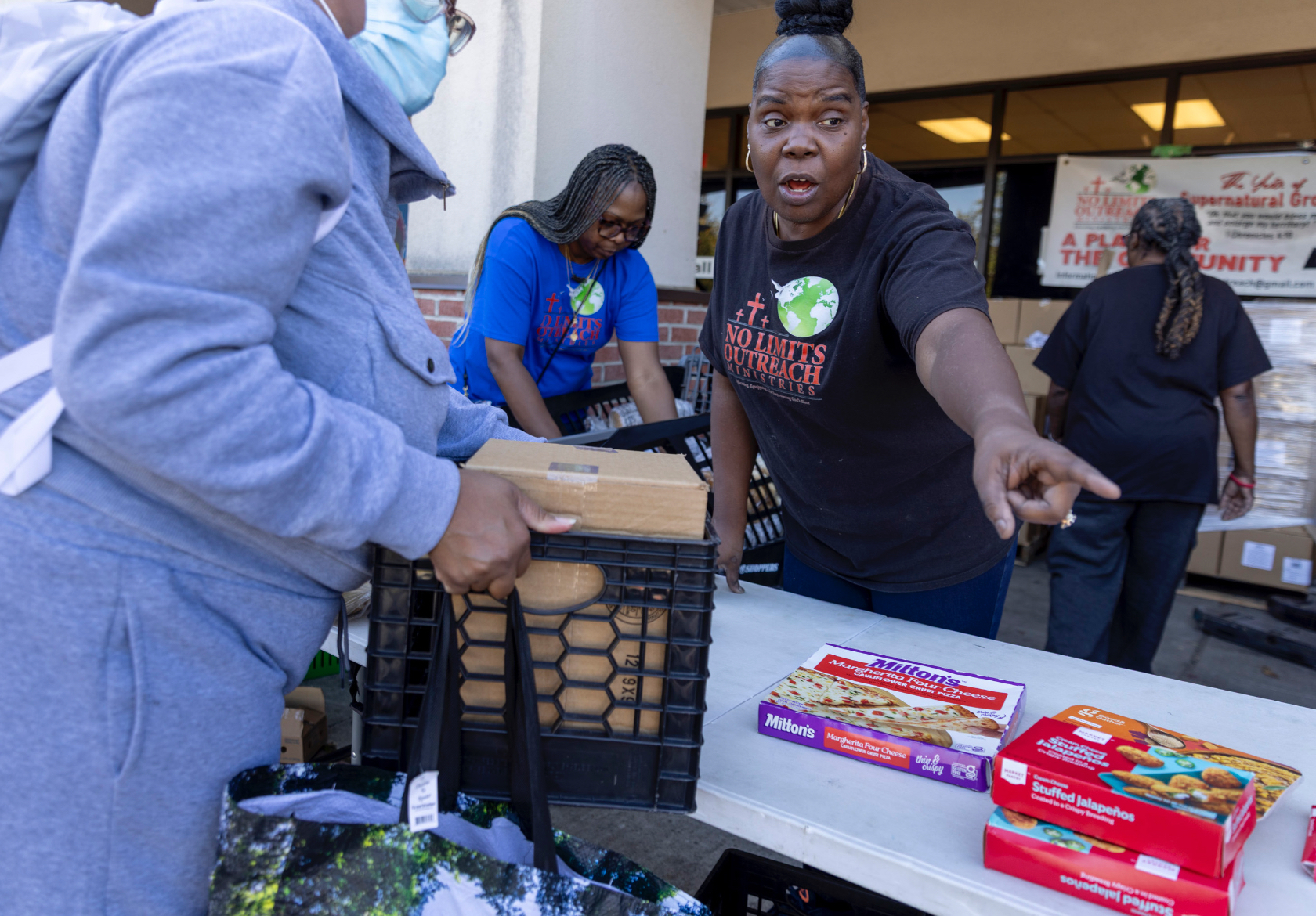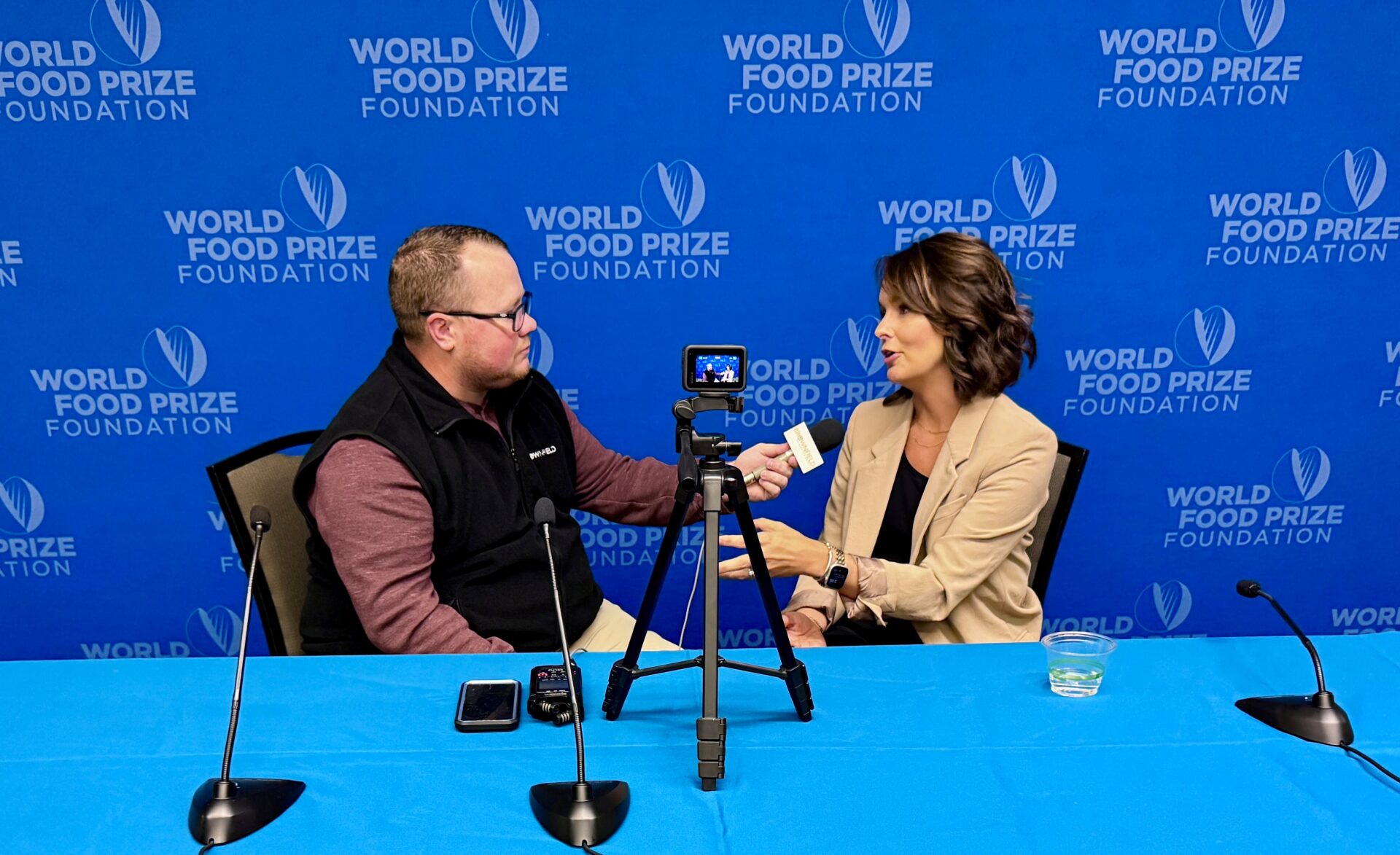Report on Climate-Adaptive Agriculture and Sustainable Development Goals
This report analyzes the global trend of agricultural adaptation to climate change, focusing on the strategy of crop shifting. It evaluates the alignment of these innovations with the Sustainable Development Goals (SDGs), particularly highlighting the tension between achieving food security (SDG 2) and climate action (SDG 13) while safeguarding cultural heritage and ensuring inclusive economic growth (SDG 8, SDG 11).
Climate-Induced Agricultural Transformation and SDG Alignment
Crop Shifting as a Strategy for SDG 2 (Zero Hunger) and SDG 13 (Climate Action)
Optimizing crop distribution to adapt to changing climates is a critical intervention for global farming systems. This strategy directly supports several SDGs:
- SDG 2 (Zero Hunger): By introducing crops better suited to future climates, such as rice, soy, and chickpeas in the UK, nations can secure food production and build resilient agricultural systems.
- SDG 12 (Responsible Consumption and Production): Modeling studies indicate that redistributing crops into sustainable configurations can maintain yields while reducing the need for agricultural inputs.
- SDG 8 (Decent Work and Economic Growth): This strategy can enhance farmer incomes and stimulate the development of new local markets, fostering sustainable economic growth.
A field trial of rice cultivation north of Cambridge, UK, exemplifies this approach, demonstrating the feasibility of growing new staple crops to enhance national food security in response to climate change.
Socio-Economic and Cultural Implications of Crop Redistribution
European Viticulture: Economic Opportunity vs. Heritage at Risk
The shift in grapevine cultivation provides a stark example of the dual impacts of climate adaptation. While rising temperatures have created a booming viticulture sector in England, contributing to SDG 8 (Decent Work and Economic Growth), it signals a crisis for traditional European wine regions. The challenges faced by these regions impact multiple development goals:
- Threat to Livelihoods: Extreme weather places over 70% of traditional European viticulture production at risk, jeopardizing the economic stability of communities and undermining progress toward SDG 1 (No Poverty) and SDG 8.
- Erosion of Cultural Heritage: Viticulture traditions, developed over centuries, are legally defined and deeply connected to regional identity. Altering grape varieties or switching crops threatens this intangible cultural heritage, a key component of SDG 11 (Sustainable Cities and Communities), specifically Target 11.4 to protect cultural heritage.
Ethiopian Coffee Cultivation: Challenges for Smallholder Farmers
In Ethiopia, climate change is projected to render 39–59% of current coffee-growing regions unsuitable. While crop redistribution could provide national-level resilience, it poses a significant threat to the livelihoods of smallholder farmers. This jeopardizes their traditional way of life, directly impacting goals for SDG 1 (No Poverty) and SDG 8 (Decent Work and Economic Growth) by threatening the primary income source for entire communities.
Balancing Innovation with the Preservation of Indigenous Knowledge
The Intangible Costs of Agricultural Adaptation
The focus on quantitative metrics such as yield and economic output often overlooks less tangible effects that are critical for sustainable development. The inability of farmers to cultivate traditional crops severs a deep connection to the land, threatening rural identity and cultural heritage. This loss of community-held knowledge, developed over millennia, represents a significant setback for SDG 13 (Climate Action), as this very knowledge is critical for building local resilience to climate variability.
Pathways to Sustainable and Inclusive Agricultural Adaptation
The Vision for Adapted Crops and Soil (VACS) Initiative
The VACS initiative, a partnership between the US Department of State, the African Union, and the FAO, offers a model for aligning agricultural adaptation with the SDGs. By focusing on under-utilized traditional crops in Africa, the initiative aims to create resilient food systems that are both productive and culturally sustaining. This approach supports multiple goals:
- SDG 2 (Zero Hunger): It promotes traditional, climate-adapted food crops like cowpea, teff, and okra, diversifying food systems.
- SDG 15 (Life on Land): It leverages the vast genetic diversity of indigenous species.
- SDG 11 (Sustainable Cities and Communities): It incorporates and preserves Indigenous knowledge within regional farming systems.
Recommendations for Achieving Sustainable Adaptation
To ensure that agricultural innovations contribute positively to the 2030 Agenda, adaptation strategies must be holistic. The following actions are recommended:
- Integrate Cultural Preservation: Adaptation policies must consider the potential impacts on cultural heritage and rural identity, in line with SDG 11.4.
- Leverage Indigenous Knowledge: Prioritize solutions that build upon traditional farming practices and knowledge, which are essential for building climate resilience (SDG 13).
- Support Smallholder Economies: Ensure that the introduction of new crops or techniques includes support for smallholder farmers to prevent negative economic impacts and promote SDG 1 and SDG 8.
- Promote Diversified Systems: Encourage diversified agricultural systems and new markets that stimulate local economies while securing global food production, thereby advancing SDG 2 and SDG 8 simultaneously.
Analysis of Sustainable Development Goals in the Article
1. Which SDGs are addressed or connected to the issues highlighted in the article?
-
SDG 2: Zero Hunger
The article directly addresses food security and sustainable agriculture. It discusses strategies like “crop shifting” to maintain yields and create resilient food systems in the face of climate change. The text mentions that these adaptations are “crucial to securing global food production” and highlights initiatives like the Vision for Adapted Crops and Soil (VACS) aimed at creating “more resilient food systems across Africa.”
-
SDG 8: Decent Work and Economic Growth
The economic implications of agricultural adaptation are a key theme. The article notes that redistributing crops can “enhance farmer incomes” and lead to the “development of new local markets.” The example of England’s “booming viticulture sector” illustrates how climate change can drive the emergence of new economic opportunities and stimulate local economies.
-
SDG 11: Sustainable Cities and Communities
While focused on rural areas, the article strongly connects to the protection of cultural heritage. It warns that climate-induced agricultural shifts risk “severing connections to the land,” threatening “rural identity and cultural heritage.” The loss of “deep knowledge of the landscape, developed over centuries and held in community memory” is presented as a major, intangible consequence of these changes, directly linking to the goal of safeguarding cultural heritage.
-
SDG 12: Responsible Consumption and Production
The article touches upon sustainable production patterns by mentioning that optimizing crop distribution can “reduce agricultural input use.” This points towards a more efficient and sustainable use of resources in agriculture, which is a core component of SDG 12.
-
SDG 13: Climate Action
This is the central theme of the article. The entire text is about how “farmers are finding new ways to adapt to climate change.” It details specific adaptation strategies such as “crop shifting or switching,” growing “drought-tolerant varieties,” and altering management strategies to build resilience against climate impacts like rising temperatures and droughts.
-
SDG 15: Life on Land
The article discusses the impact of climate change on land suitability for agriculture. It mentions how droughts are reducing yields in European vineyards and rendering coffee-growing regions in Ethiopia unsuitable for production. The VACS initiative’s focus on “Adapted Crops and Soil” also highlights the importance of soil health and sustainable land management in building agricultural resilience.
-
SDG 17: Partnerships for the Goals
The article provides a clear example of a multi-stakeholder partnership. It describes the Vision for Adapted Crops and Soil (VACS) initiative, which was “launched by the US Department of State in partnership with the African Union and the Food and Agriculture Organization (FAO),” demonstrating a collaborative approach to achieving sustainable development.
2. What specific targets under those SDGs can be identified based on the article’s content?
-
SDG 2: Zero Hunger
- Target 2.3: By 2030, double the agricultural productivity and incomes of small-scale food producers. The article mentions that crop redistribution can “enhance farmer incomes” and expresses concern for “smallholder farmers whose traditional ways of life are now jeopardized” in Ethiopia.
- Target 2.4: By 2030, ensure sustainable food production systems and implement resilient agricultural practices. The article’s focus on adapting to climate change through “crop shifting,” using “drought-tolerant varieties,” and the VACS initiative’s goal to “create more resilient food systems” directly align with this target.
- Target 2.5: By 2020, maintain the genetic diversity of seeds, cultivated plants and their related wild species. The VACS initiative’s strategy of “drawing on the vast genetic diversity in under-utilized opportunity crops” like cowpea, teff, and okra is a direct implementation of this target.
-
SDG 8: Decent Work and Economic Growth
- Target 8.2: Achieve higher levels of economic productivity through diversification, technological upgrading and innovation. The article discusses innovations like “gene-edited, drought-tolerant varieties” and diversification through “crop switching,” which can “open doors to diversified agricultural systems and new markets.”
-
SDG 11: Sustainable Cities and Communities
- Target 11.4: Strengthen efforts to protect and safeguard the world’s cultural and natural heritage. The article repeatedly warns that agricultural innovations “risk severing connections to the land,” threatening “rural identity and cultural heritage” and the loss of “Indigenous knowledge.”
-
SDG 12: Responsible Consumption and Production
- Target 12.2: By 2030, achieve the sustainable management and efficient use of natural resources. The article states that modelling studies show that redistributing crops can “reduce agricultural input use,” pointing to more efficient resource management.
-
SDG 13: Climate Action
- Target 13.1: Strengthen resilience and adaptive capacity to climate-related hazards and natural disasters. The entire article is an exploration of this target, detailing how farmers are adapting to climate change through strategies like crop switching to build resilience against hazards like drought and extreme temperatures.
-
SDG 15: Life on Land
- Target 15.3: By 2030, combat desertification, restore degraded land and soil…and strive to achieve a land degradation-neutral world. The article implies land degradation through its discussion of droughts that “reduce yields” and climatic changes that render growing regions “unsuitable for production,” such as the 39-59% of coffee regions in Ethiopia.
-
SDG 17: Partnerships for the Goals
- Target 17.16: Enhance the Global Partnership for Sustainable Development, complemented by multi-stakeholder partnerships. The VACS initiative, a partnership between the US Department of State, the African Union, and the FAO, is a direct example of such a partnership.
3. Are there any indicators mentioned or implied in the article that can be used to measure progress towards the identified targets?
- Agricultural Yields: The article frequently mentions crop yields as a key metric, stating that crop redistribution can “maintain yields” and that droughts “reduce yields.” This can be used to measure progress towards Target 2.3.
- Farmer Incomes: The potential to “enhance farmer incomes” is cited as a benefit of crop redistribution, serving as a direct indicator for Target 2.3.
- Percentage of Land Area at Risk: The article provides specific figures that can serve as indicators of climate vulnerability. For example, “more than 70% of [European viticulture] production at risk” and “39–59% of the growing regions” for coffee in Ethiopia could become unsuitable. These metrics measure the scale of the problem addressed by Target 13.1 and 15.3.
- Preservation of Genetic Diversity: The focus of the VACS initiative on “under-utilized opportunity crops” such as cowpea, teff, and okra implies an indicator related to the number and variety of traditional/indigenous crops being incorporated into farming systems, relevant to Target 2.5.
- Preservation of Indigenous and Traditional Knowledge: Although a qualitative indicator, the article’s emphasis on the risk of losing “deep knowledge of the landscape” and “Indigenous knowledge” makes its preservation a critical measure of success for sustainable adaptation, relevant to Target 11.4. The VACS initiative’s aim to leverage and preserve this knowledge is a positive action that can be monitored.
- Development of New Markets and Economic Sectors: The emergence of a “booming viticulture sector” in England is a tangible indicator of economic diversification and growth resulting from agricultural adaptation, relevant to Target 8.2.
4. Table of SDGs, Targets, and Indicators
| SDGs | Targets | Indicators |
|---|---|---|
| SDG 2: Zero Hunger |
2.3: Double agricultural productivity and incomes of small-scale food producers.
2.4: Ensure sustainable food production systems and implement resilient agricultural practices. 2.5: Maintain the genetic diversity of seeds and cultivated plants. |
– Crop yields (e.g., maintaining or increasing yields). – Farmer incomes (e.g., enhancement of incomes). – Implementation of resilient practices (e.g., crop switching). – Number and variety of under-utilized/traditional crops (e.g., cowpea, teff) incorporated into farming systems. |
| SDG 8: Decent Work and Economic Growth | 8.2: Achieve higher levels of economic productivity through diversification and innovation. | – Emergence of new economic sectors (e.g., “booming viticulture sector” in England). – Development of new local markets. |
| SDG 11: Sustainable Cities and Communities | 11.4: Strengthen efforts to protect and safeguard the world’s cultural and natural heritage. | – (Qualitative) Preservation of rural identity, cultural heritage, and traditional/Indigenous knowledge. |
| SDG 12: Responsible Consumption and Production | 12.2: Achieve the sustainable management and efficient use of natural resources. | – Reduction in agricultural input use. |
| SDG 13: Climate Action | 13.1: Strengthen resilience and adaptive capacity to climate-related hazards. | – Implementation of adaptation strategies (e.g., crop switching, use of drought-tolerant varieties). |
| SDG 15: Life on Land | 15.3: Combat desertification and restore degraded land and soil. | – Percentage of agricultural land becoming unsuitable for traditional crops due to climate change (e.g., 39-59% of Ethiopian coffee regions). |
| SDG 17: Partnerships for the Goals | 17.16: Enhance the Global Partnership for Sustainable Development. | – Formation of multi-stakeholder partnerships (e.g., the VACS initiative between the US, African Union, and FAO). |
Source: nature.com






